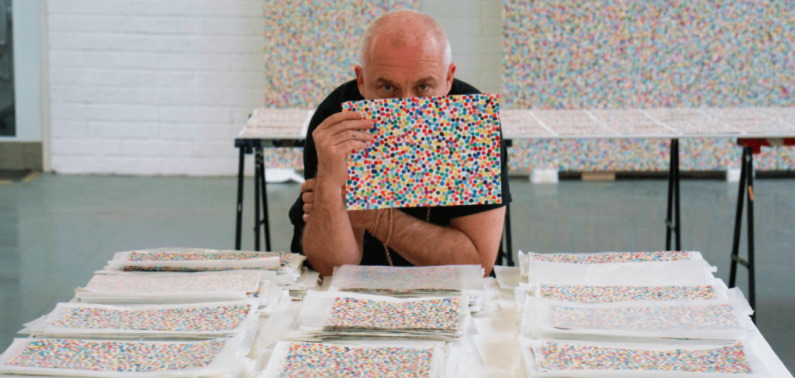From DeFi and supply chains to gaming and helium mining, the rewards for and benefits of blockchain adoption are as vast as they are innovative. You probably knew that.
But did you know that using Aussie decentralised green energy enabler Power Ledger can get you free beer? Delivered?
Stockhead looks at how that works, and takes a glance at some other unusual blockchain uses currently grabbing headlines.
POWR drinking
You can get it flipping land… you can get it trading SAND… you can get it losing five grand in a defi exploit… The mad world of crypto and blockchain has no shortage of ways to give you a hard-earned thirst.
Power Ledger (which goes by the token ticker POWR) knows this. Maybe that’s why the pioneering Perth-based blockchain company has teamed up with Victoria Bitter and Diamond Energy in a new “peer-to-beer” initiative for solar panel users and lager lovers.
The scheme is called Solar Exchange and allows participants to exchange credit on Diamond Energy power bills generated from rooftop solar panels… for slabs of VB.
If there’s a more Australian use case for blockchain than this, we’re yet to hear about it.

VB, produced by Carlton & United Breweries, was acquired by Asahi Beverages last year and this programme forms part of Asahi’s overall sustainability agenda.
Traceability is where Power Ledger (ranked 314 on CoinMarketCap) comes in. The company’s technology allows participants to track the transactions of solar energy on a public blockchain ledger and trade any excess, unused energy (of which there is invariably always some) for beer.
Every $1.25 worth of energy generated in excess earns participants one stubby of VB. Once 24 VBs are earned (about $30 worth), a case of the beer is delivered to their front door, free of delivery charge.
Upon the scheme’s launch, Power Ledger co-founder Dr Jemma Green said: “In a country that thrives on the beer economy, we are excited to be part of Australia’s first peer-to-beer energy exchange scheme.”
Beer, blockchain, sun and renewable energy… does it get any better?
Flash payments

A strip club in Las Vegas, The Crazy Horse 3, will soon become one of the first entertainment venues in the US to accept Bitcoin using the Lightning Network.
The Lightning Network is a much-lauded, much-needed layer two scaling solution that sits on top of the Bitcoin blockchain.
The network can process transactions and settle payments in a matter of seconds, rather than several long, tedious, screen-refreshing minutes or even hours. For those who think transacting with Bitcoin as a currency is a good idea, as opposed to HODLing it as a store of value, the Lightning Network is a revelation.
In any case, super fast digital currency transactions would seem like a no-brainer for entertainment that encourages hands-off, audience-based transactional participation.
Stag-do crowds, visiting businessmen and undercover cops alike will be able to tip their favourite dancers through use of the OpenNode app, having first paid for a “VIP bottle package” using Bitcoin.
The world of crypto is no stranger to the adult entertainment industry. For instance, Verge, ranked 137 on CoinMarketCap, has been serving as a payment option on Pornhub since early 2018.
And then there’s C*mRocket – a female-led crypto aiming to disrupt the porn industry and create a fairer market for creators and consumers. This low-cap asset (490 on CoinMarketCap) had some explosive up-and-down price action upon its launch in late April, but has since gone limp along with much of the rest of the market.
Pieces of Picasso

Many, if not most, innovators and investors in the cryptoverse have strong belief in the burgeoning revolution of tokenised assets in the form of NFTs (non-fungible tokens). And we’re not just talking pixelated swords and banana skins.
Just about everything you can possibly think of could one day be tokenised, and some of them already are, including commodities such as gold and silver, as well as real estate and fine art.
Next month, Australia’s first ever in-person exhibition of NFT art will take place in Melbourne, and in this past week there’s been some big global news that straddles both crypto and the traditional art world.
Last Friday, the Swiss digital asset bank Sygnum announced it’s issuing NFTs that represent fractionalised ownership in the 1964 oil-on-canvas Pablo Picasso painting Fillete au béret (pictured above).
It will go live for sale by the end of July and, according to Sygnum, marks the first time ownership rights in a Picasso, or any artwork, are being placed on a public blockchain by a regulated bank.
Interested investors will be able to buy and trade “shares” in the artwork called Art Security Tokens. Transactions will be handled through SygnEx, Sygnum’s digital asset trading platform.
Hirst spots 10,000 opportunities

Meanwhile, British artist Damien Hirst is also delving further into the NFT art movement, with a new project he calls The Currency.
It consists of 10,000 individual spotty-coloured works on paper he created in 2016, which can be bought and sold as individual pieces.
Hirst’s scheme involves the choice of either keeping the paper artworks only, or having them just as NFTs, in which case the physical versions will be literally burnt, giving the unique digital versions their value.
You can find out more about the project here.
